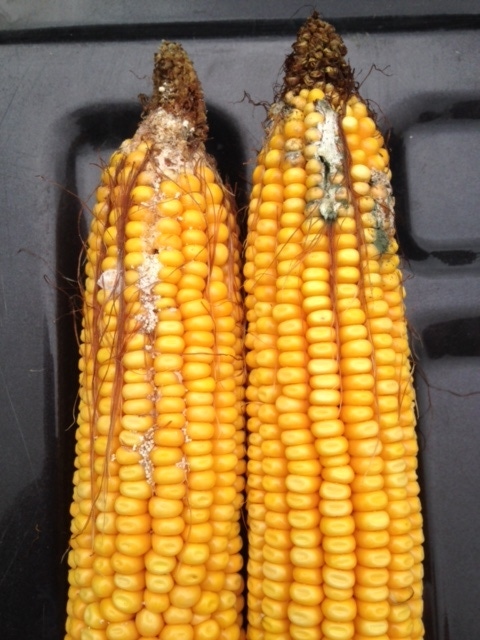- Nutrition & Health
- Swine Health and Nutrition
- Poultry Health and Nutrition
- Dairy Health and Nutrition
- Beef Health and Nutrition
N&H TOPLINE: Monitor for mycotoxins
Severe weather across U.S. may result in high risk for mycotoxins.

Each growing season can present its own unique challenges, from hot temperatures and drought to excess rainfall and flooding. This year, all of these conditions were prominent in different areas of the country.
Extreme weather conditions can not only reduce yield but also delay harvest, increase plant stress and lead to future issues for the crop, including molds and mycotoxins, according to an announcement from Alltech.
Mycotoxins, which are produced by certain species of molds and can have toxic properties that affect animal health and performance, are a concern for livestock producers, because they influence feed quality and animal safety.
Mycotoxin expert Duarte Diaz, associate professor and extension dairy specialist at the University of Arizona, told Feedstuffs that it looks like there will be regional differences in the 2018 crop, with more fumonisin from the southern states due rainfall and wet weather but more deoxynivalenol (DON), T-2 toxin and zearalenone in the Midwest and West.
Alltech said harvest samples from across the U.S. are currently being submitted to the Alltech 37+ mycotoxin analytical services laboratory, and the analysis is showing high levels of mycotoxins this year, as in past years, especially for DON, fusaric acid and fumonisin, as well as HT-2.
“The extreme weather events that we’ve seen across the U.S. this year present different challenges, different types of molds and different types of mycotoxins,” said Dr. Max Hawkins, nutritionist with the Alltech Mycotoxin Management team. “We monitor those risks with our harvest analysis ... to evaluate risk to livestock health and performance.”
Mycotoxins are seldom found in isolation, Hawkins said, and when multiple mycotoxins are consumed, they may have additive, or even synergistic, interactions that increase the overall risk to livestock performance and health. As a result, an animal may have a stronger response than what would be expected if it was only experiencing a single mycotoxin challenge. In 2017, 95% of samples submitted to Alltech tested positive for at least five mycotoxins, the company said.
In a post from the Iowa State University Extension & Outreach "Integrated Crop Management News," authors Erin Bowers, Charles Hurburgh and Alison Robertson noted that the Iowa corn and soybean crops are being exposed to excessive moisture that encourages the growth of molds, which is raising the risk for reduced grain quality.
They said if the molds are capable of producing mycotoxins, affected grain may be subject to marketing restrictions. However, not all fungi produce mycotoxins. Ear rot identification is key to assessing if and for which mycotoxins a field is at risk, Bowers, Hurburgh and Robertson said.
Generally, they urged Iowa corn growers in the northern half of Iowa to be watchful for DON (vomitoxin) and zearalenone; these two mycotoxins are produced by the same fungus. Aflatoxin and fumonisin are the predominant risk in the southern portions of the state, they noted. Sporadic risk exists in between these areas, with cool, wet growing conditions favoring vomitoxin and zearalenone and hot, dry conditions favoring aflatoxins or fumonisins.
If weather hinders harvest, they said producers should consider scouting fields to assess the presence, extent and severity of fungal-infected ears.
According to Bowers, Hurburgh and Robertson, mycotoxins tend to occur sporadically throughout a field and among ears of corn. The level of mycotoxin contamination also varies greatly among the individual kernels on an ear. Representative sampling is crucial to achieving an accurate mycotoxin test result, they said. Ideally, samples should be comprised of kernels obtained from throughout the lot (e.g., from multiple locations/units representing many ears), be it from a field, a bin or a composite of multiple grain deliveries at an elevator.
The authors said it takes relatively few kernels to contaminate a load at a level that would invoke marketing restrictions, so enough grain must be collected to ensure that there is a chance of sampling those affected kernels.
About the Author(s)
You May Also Like



